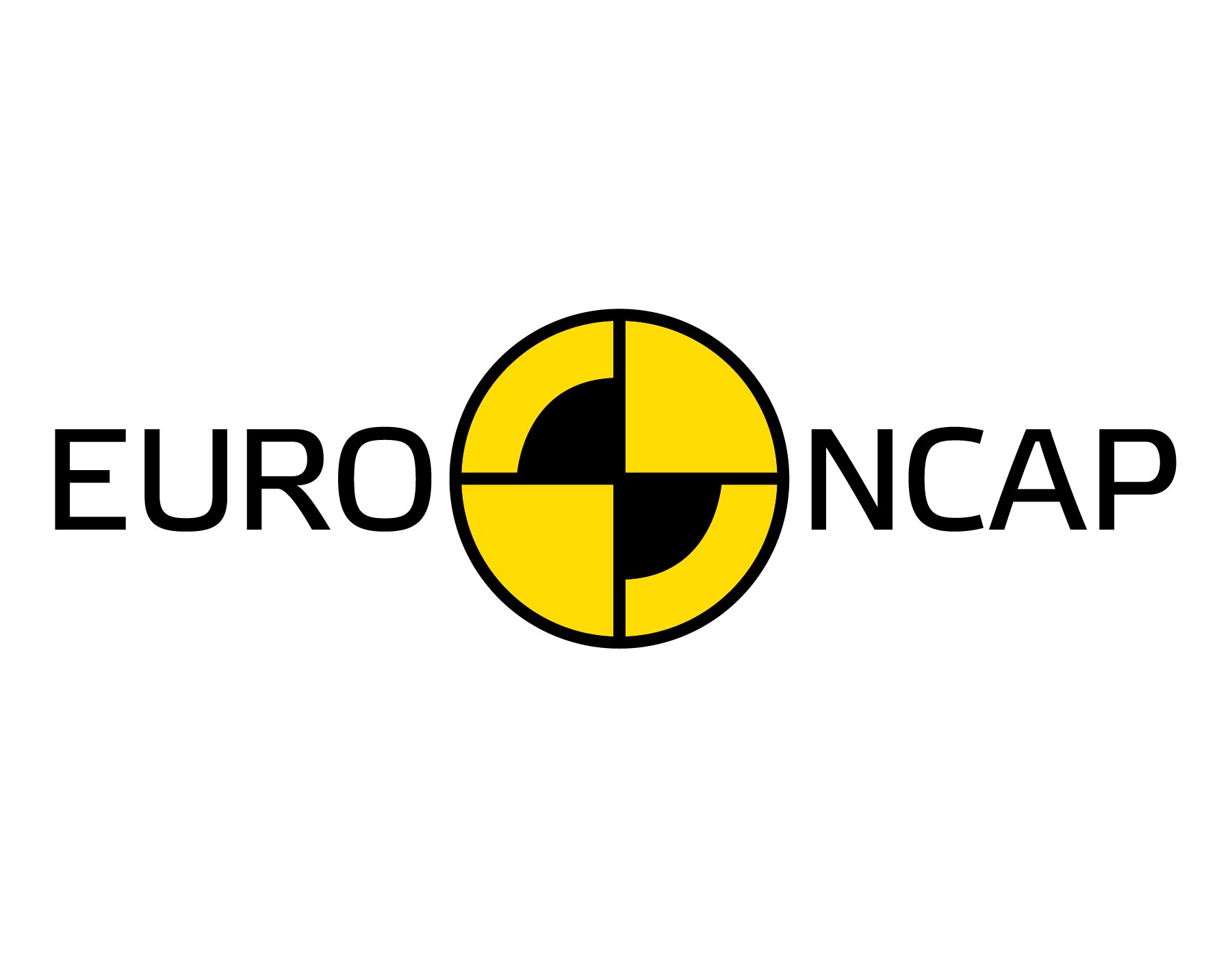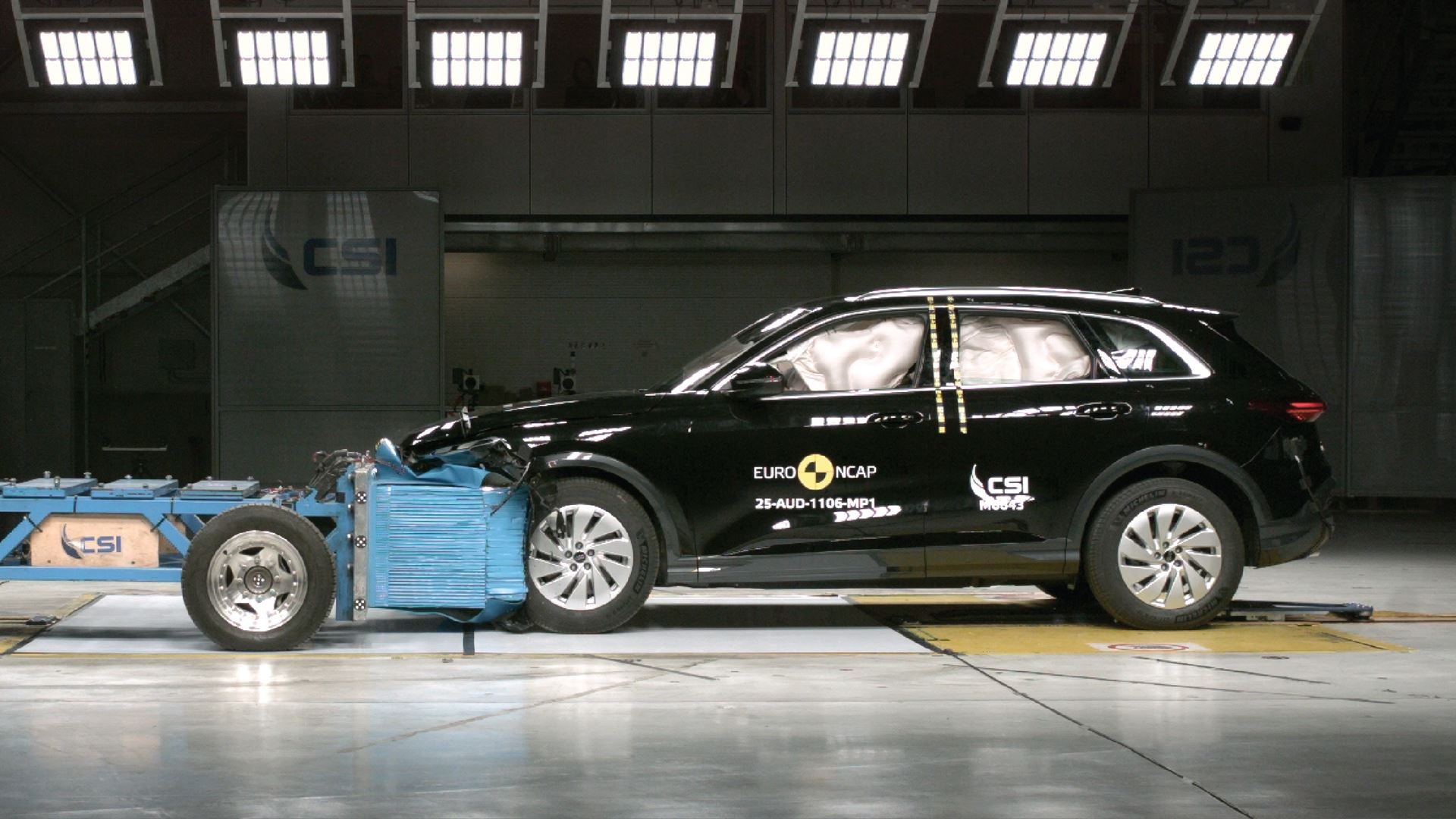LEUVEN, BELGIUM – The testing of 16 new cars has highlighted Euro NCAP’s ongoing drive to improve the safety of vehicles for all road users.
The latest models from Audi, Dacia, Ford, MG, Opel/Vauxhall, Peugeot, Renault, Tesla, Voyah and Volkswagen were all put through Euro NCAP’s impartial assessment of their crash protection, crash prevention and post-crash safety. Five-star ratings are awarded to the new Audi A5 PHEV (2024), Audi Q5, VW Tayron, MG MGS5 EV, Tesla Model 3, Toyota C-HR PHEV (2024), and newcomer Voyah COURAGE. When fitted with Kia’s optional safety pack, the EV3 also achieves a five-star rating. The reborn, fully electric Renault 4 (2024), the Ford Tourneo Custom (including its all-electric variant), Kia EV3 (without the safety pack), Opel Grandland (Vauxhall Grandland in the UK), Stellantis’ siblings Peugeot 3008 and 5008, and Volkswagen Caravelle are all awarded four stars. Finally, the latest addition to budget brand Dacia, the Bigster (2024), achieves three stars, reaffirming its no-frills, low-budget reputation.
Euro NCAP assesses a car's safety by evaluating its performance in front, side, and rear impact tests, as well as its performance in pedestrian safety, and its car and vulnerable road user crash prevention systems. The tests are designed to provide a holistic view of safety, which includes protection of occupants inside the car, but also the risk of injury to other road users, such as in a collision with a pedestrian or another vehicle.
In recent times, Euro NCAP has observed a clear trend of cars in the test programme becoming heavier, and this is once again confirmed with the latest batch of cars. Over the past 10 years, the average weight of cars sold in Europe has increased by 100kg. Much of this is due to the ongoing consumer popularity of the SUV, which accounts for 54 per cent of Europe’s new car sales in 2024, 33 per cent in the UK, and the move to electric. This increases car weight and size, referred to as car bloat, and has become a matter for public debate given its potential negative impact on safety and carbon footprint.
In 2020, Euro NCAP updated its frontal offset test, in which it evaluates how models perform when crashing head-on into another vehicle. In this unique test, called the Mobile Progressive Deformable Barrier (MPDB), a moving barrier is used to simulate a head-on collision with a typical mid-sized (1400 kg) family car. The vehicle under test and the MPDB are both driven at 50 km/h (31 mph) and positioned with a 50 per cent overlap. The introduction of the MPDB has allowed Euro NCAP to examine not only the vehicle's occupant protection but also its aggressiveness towards other cars on the road.
The level of deceleration of the MPDB in the impact and the footprint of the test vehicle to the deformable barrier simulate how efficiently the vehicle can interact with another vehicle in a head-on collision. A vehicle that leads to extremely high trolley decelerations, or which causes very severe localised deformation, is said to exhibit poor ‘compatibility’. In the real world, such vehicles may not absorb their own energy as efficiently as they should and could pose a higher threat to other road users.
While all 16 cars tested in this batch performed well at protecting those onboard, the MPDB test results showed that some are potentially significantly more harmful to occupants of other cars in the event of a frontal collision. The Audi Q5 – a mid-size SUV with a test curb weight of 2245 kg – was found to offer poor compatibility when colliding with an oncoming vehicle. Analysis of the deceleration of the impact trolley during the test, and analysis of the deformable barrier after the test, revealed that the Audi Q5 would be overly aggressive toward another car in a frontal collision, with some parts of the front structure of the Q5 proving particularly unforgiving. The new Volkswagen Tayron, another mid-size SUV, was also penalised for poor compatibility.
However, these outcomes are not unique. Previous evaluations performed by Euro NCAP have shown that, amongst others, the BMW iX, Land Rover Defender, NIO ES8, and Polestar 2 have all received the maximum penalty during MPDB testing, and the Alfa Romeo Tonale, BMW 2 Series Coupé, and Genesis GV80 have been deducted points for poor compatibility.
On the other hand, there have also been examples of good compatibility, such as the Mazda CX-60 and CX-80, cars where the manufacturer has shown significant effort to engineer energy-absorbing and load-distributing front structures to reduce the vehicle’s aggressiveness.
It should be noted that if a vehicle does not do well in terms of compatibility due to the weight or behaviour of its front structures, it does not mean it is by definition an unsafe car. In all other aspects of Euro NCAP’s safety tests, including crash avoidance for car and vulnerable road user crashes, the protection of Audi’s Q5 proved impressive, offsetting the deduction made for compatibility issues, ensuring it achieved a maximum rating of five stars. The Volkswagen Tayron also gave a robust performance in all other areas and achieved a five-star rating.
Euro NCAP calls upon the vehicle industry to improve the vehicle crash compatibility of future models and not to accept settling for the status quo. It believes Mobile Progressive Deformable Barrier testing can help manufacturers engineer their cars and vans to better protect occupants in the event of a head-on collision. The comprehensive suite of testing performed by Euro NCAP ensures European consumers benefit from cars that meet the world’s highest vehicle safety standards, and that Europe remains a world leader in vehicle safety.
When Euro NCAP introduced Mobile Progressive Deformable Barrier testing in 2020, the objective was to assess how well cars protect people in the event of the most common – and one of the most dangerous – accidents, an offset head-on collision.
Since then, we have responded to the general trend toward larger, heavier cars and adjusted the MPDB test scoring system to encourage manufacturers to ensure that heavier cars are not disproportionately damaging to lighter vehicles. At the same time, the makers of smaller, lighter cars can benefit from these valuable learnings.
We know car manufacturers have the capability to design and build frontal structures that can better manage the proportions and mass of the vehicle and the violent change in momentum that comes with a frontal collision. We believe Euro NCAP’s impartial testing can bring about significant improvements in this critical sector of car safety, and we will continue to monitor the market developments in this area.
Dr. Aled Williams, Programme Director Euro NCAP
Latest Euro NCAP results (May 2025)
To view the results for each car listed below, click here.
| Vehicle | Euro NCAP rating |
| Audi A5 PHEV (2024) | 5 stars |
| Audi Q5 (2025) | 5 stars |
| Dacia Bigster (2024) | 3 stars |
| Ford Tourneo Custom (2025) | 4 stars |
| Ford E-Tourneo Custom (2025) | 4 stars |
| Kia EV3 (2025) | 4 stars; 5 stars (with safety pack) |
| MG MGS5 EV (2025) | 5 stars |
| Opel/Vauxhall Grandland (2025) | 4 stars |
| Peugeot 3008 (2025) | 4 stars |
| Peugeot 5008 (2025) | 4 stars |
| Renault 4 E-Tech Electric (2024) | 4 stars |
| Tesla Model 3 (2025) | 5 stars |
| Toyota C-HR PHEV (2024) | 5 stars |
| Voyah COURAGE (2025) | 5 stars |
| VW Tayron (2025) | 5 stars |
| VW Caravelle (2025) | 4 stars |

